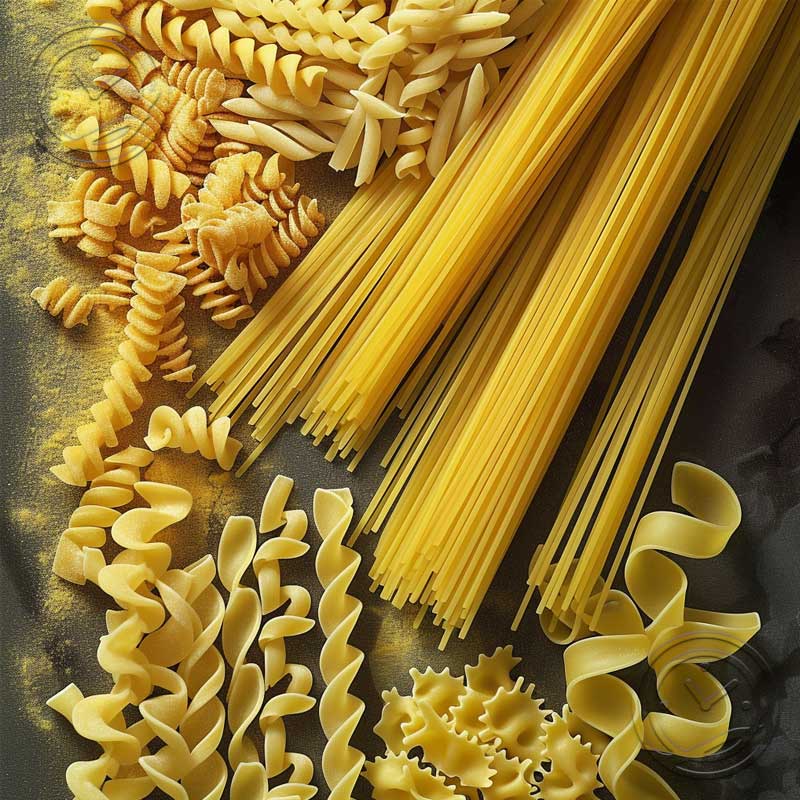Vegan pasta is a great option for people who follow a plant-based diet.
It is also a good choice for people who are allergic to dairy or eggs.
However, it can be difficult to find vegan pasta that is both delicious and affordable.
This article will help you identify vegan pasta and understand the different types of vegan pasta that are available.
We will also provide you with tips on how to cook vegan pasta and make it taste delicious.
By the end of this article, you will be able to find and cook vegan pasta that you love!
Understanding Ingredients
Reading ingredient labels on pasta packaging is essential for vegans and vegetarians to ensure that the food they are eating is not made from animal products.
Common animal-derived ingredients in pasta include:
- Eggs: Eggs are often used as a binding agent in pasta dough.
- Milk: Milk or dairy products, such as whey or casein, are sometimes used to add flavor or richness to pasta.
- Butter: Butter is made from milk and is often used as a sauce or topping for pasta.
- Cheese: Cheese is made from milk and is often used as a sauce or topping for pasta.
If you are unsure whether a particular pasta product is vegan-friendly, it is always best to check the ingredient label carefully.
Cracking the Egg Dilemma
Traditional pasta dough is made with eggs, which act as a binding agent and help to create a smooth, chewy texture.
However, eggs are not a vegan-friendly ingredient, so vegans and vegetarians who want to enjoy pasta have to seek out egg-free alternatives.
- Eggs are a common ingredient in traditional pasta dough. They help to create a smooth, chewy texture and act as a binding agent.
- Vegans and vegetarians who want to enjoy pasta have to seek out egg-free alternatives. There are a number of different egg-free pasta options available, made with ingredients such as chickpea flour, rice flour, or cornmeal.
- Egg-free pasta can be just as delicious and satisfying as traditional pasta. There are a wide variety of egg-free pasta options available, so you can find one that fits your taste preferences.
If you’re looking for an egg-free pasta option, here are a few tips:
- Read the ingredient list carefully. Some pastas that are labeled as “”vegan”” or “”egg-free”” may still contain eggs, so it’s important to check the label before you buy.
- Try a variety of different brands. There are a number of different egg-free pasta brands available, so you may need to try a few different ones before you find one that you like.
- Don’t be afraid to experiment. Egg-free pasta can be used in a variety of dishes, so you can experiment with different recipes until you find one that you love.
With a little bit of effort, you can find delicious and satisfying egg-free pasta options that will allow you to enjoy all of your favorite pasta dishes without having to compromise your vegan or vegetarian lifestyle.
4 Mediterranean Diet Butter Substitute
Unlock the secrets to a healthier, more vibrant life with our Mediterranean Diet Butter Substitute guide. Delve into the world-renowned…
Restaurant Dining
When dining out, it can be difficult to find vegan pasta options. However, there are a few things you can do to make sure you have a satisfying meal.
- Ask your server about the ingredients in the pasta dishes. Many restaurants will be happy to accommodate your dietary restrictions.
- Look for vegan pasta dishes on the menu. Some restaurants will specifically label their vegan dishes, while others may simply list the ingredients.
- Be prepared to make substitutions. If there is no vegan pasta option on the menu, you may be able to substitute another type of pasta or ask for the dish to be made without cheese or meat.
In addition to looking for vegan pasta options on the menu, you can also try to find vegan-friendly restaurants.
These restaurants will typically have a variety of vegan dishes to choose from, and they will be more likely to be able to accommodate your dietary restrictions.
By following these tips, you can enjoy a delicious and satisfying vegan pasta meal, even when you’re dining out.
Certifications
Vegan certification labels on pasta packaging can help you ensure that the product is made without animal products. Look for the following labels when shopping for vegan pasta:
- USDA organic: This label indicates that the pasta is made with organic ingredients, including organic wheat flour.
- Vegan: This label indicates that the pasta is made without any animal products, including eggs, dairy, or honey.
- Certified vegan: This label is issued by a third-party organization that verifies that the pasta is made without any animal products.
If you cannot find a pasta that is certified vegan, you can also look for pasta that is made with plant-based ingredients, such as chickpea flour or lentil flour.
These pastas are typically vegan, but it is always best to check the label to be sure.
Discover the secrets to success on a keto diet with our comprehensive guide to keto-friendly cheeses. Uncover the delicious world…
Behind the Brand
If you are unfamiliar with a particular pasta brand, it is always a good idea to do some research before you buy it.
You can check the company’s website for ingredient information, and you can also read reviews from other vegans to see what they have to say about the product.
- Check the company’s website for ingredient information. Most companies will list the ingredients for their products on their website. This is a great way to make sure that the pasta you are buying is vegan-friendly.
- Read reviews from other vegans. You can find reviews of vegan pasta brands on websites like Amazon and Yelp. Reading reviews can help you get a sense of what other vegans think about the product, and it can also help you identify any potential problems with the product.
Flavorful Twists
Flavored pasta is a great way to add variety to your meals, but it’s important to be aware of potential non-vegan ingredients.
Here are a few things to look out for:
- Animal-derived flavorings, such as anchovies, butter, cheese, or eggs
- Shellfish-derived ingredients, such as shrimp or crab
- Dairy-based ingredients, such as milk, cream, or butter
- Gluten-containing ingredients, such as wheat or barley
If you’re looking for a vegan-friendly pasta option, your best bet is to choose a plain pasta that is made from a plant-based ingredient, such as rice, corn, or quinoa.
You can then add your own vegan-friendly flavorings, such as vegetables, herbs, or spices.
Here are a few of our favorite vegan pasta recipes:
- Pasta with tomato sauce and vegetables
- Pasta with pesto sauce and roasted vegetables
- Pasta with olive oil, garlic, and herbs
- Pasta with tomato sauce and vegan meatballs
With a little creativity, you can easily create delicious and satisfying vegan pasta dishes that everyone will enjoy.
13 Tofu Recipes for Mediterranean Diet
Dive into the world of Tofu Recipes for Mediterranean, where health meets flavor in just minutes! Discover the benefits of…
DIY Pasta
Here are step-by-step instructions for making homemade vegan pasta and suggestions for alternatives to eggs for binding:
- In a large bowl, whisk together 2 cups all-purpose flour, 1 teaspoon salt, and 1 teaspoon olive oil.
- Slowly add 1 cup warm water to the dry ingredients, stirring constantly until a dough forms.
- Turn the dough out onto a lightly floured surface and knead for 5-7 minutes, until smooth and elastic.
- Cover the dough with a damp cloth or plastic wrap and let it rest for 30 minutes.
- After the dough has rested, divide it into 4 equal pieces.
- Roll out each piece of dough to a thin sheet, about 1/8-inch thick.
- Cut the dough into your desired shapes (tagliatelle, fettuccine, etc.).
- Place the pasta sheets on a lightly floured baking sheet and set aside.
- Bring a large pot of salted water to a boil.
- Add the pasta sheets to the boiling water and cook for 2-3 minutes, or until al dente.
- Drain the pasta and serve immediately with your favorite sauce.
Alternatives to Eggs for Binding
- Use 1 tablespoon ground flaxseed mixed with 3 tablespoons water for each egg.
- Use 1 tablespoon cornstarch mixed with 2 tablespoons water for each egg.
- Use 1 tablespoon tapioca starch mixed with 2 tablespoons water for each egg.
The Sauce Dilemma
When it comes to pasta sauces, there are a lot of options to choose from.
But not all of them are vegan-friendly.
- Some sauces contain dairy products, such as milk, cream, or cheese.
- Other sauces contain meat or fish products, such as bacon, ham, or anchovies.
- Some sauces contain eggs.
If you’re looking for a vegan-friendly pasta sauce, it’s important to read the ingredients list carefully.
Here are some vegan-friendly pasta sauce options:
- Tomato sauce
- Pesto sauce
- Alfredo sauce (made with vegan butter and soy milk)
- Marinara sauce
- Vodka sauce
You can also find vegan-friendly pasta sauces at many grocery stores and online retailers.







